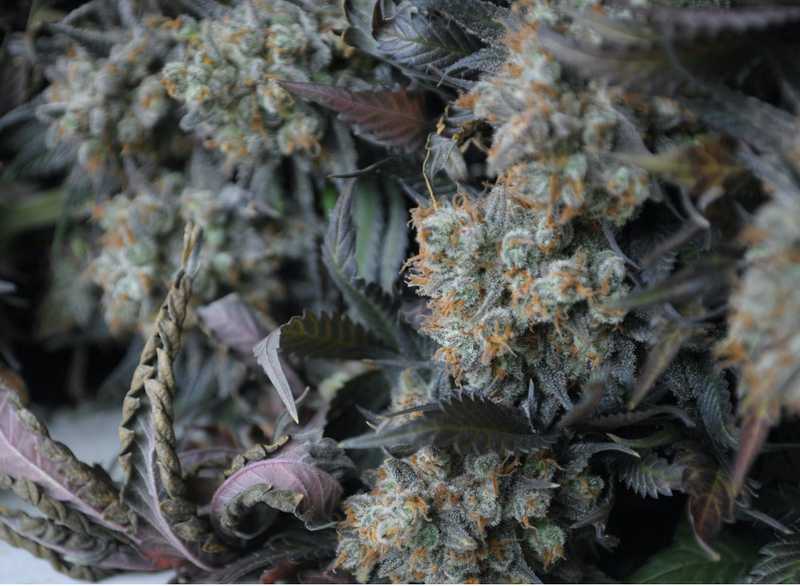While cannabinoids get a lot of the attention, people are beginning to understand the huge impact that terpenes can have on many aspects of the medicinal marijuana experience. In this article, part of our series geared towards folks new to cannabis, we’ll go over why terpenes can be the most important factor in choosing the right cannabis strains for you.
FOLLOW US ON FACEBOOK & INSTAGRAM
What Are Terpenes?
Terpenes are the compounds in cannabis that are responsible for the smell and taste of the plant. Unlike cannabinoids, terpenes aren’t unique to cannabis, but are also found in many fruits and herbs. These flavorful and scent-producing chemicals are not only responsible for all of the variety in aroma and taste that consumers experience with cannabis, but they’ve also been shown to be therapeutically helpful, influencing the way cannabis affects us.
In fact, research suggests that terpenes can serve as the biggest chemical factor in the experiential differences between cannabis strains. Like cannabinoids, these chemicals are subject to the entourage effect. This means they interact with each other, and can thereby produce different effects depending on the other cannabinoids and terpenes they’re used in combination with.
That said, it’s crucial that you understand the effects of the most common terpenes so that you can make informed choices about the cannabis you consume. Here are a few of the main terpenes that are important to get to know.
RELATED: WHAT ARE TERPENES & WHAT IS THEIR EFFECT?
Myrcene
Myrcene is the most common terpene found in cannabis. This terpene is also found in mangoes, bay leaves, thyme, lemongrass and hops. With a spicy, earthy, skunky aroma and flavor, myrcene is known for its ability to:
- reduce pain
- help with depression and anxiety
- decrease inflammation
- fight bacteria
- improve sleep
Myrcene is also a big determinant of whether a strain is energizing or sedative. If a marijuana strain has more than 0.5% myrcene, it will be sedative in nature, but if it has lower percentages of the terpene, it will be more energizing.
Limonene
Limonene, the second most common terpene, can be identified by its strong citrus aroma; it’s found in the peel of many citrus fruits This terpene has been shown to help with gastrointestinal issues such as gastric reflux and ulcers. Limonene may also help:
- fight bacterial infections
- stimulate the immune system
- suppress the growth of tumors
- stimulate appetite
- ease depression and anxiety
Caryophyllene
Caryophyllene is another common terpene that’s found in most strains of cannabis. Also found in cloves and black pepper, this terpene brings the same peppery, earthy aromas you’d find in cloves, pepper, cinnamon or nutmeg. Caryophyllene is the only terpene known to act on the endocannabinoid system—by binding to the CB2 receptor, it can help:
- ease anxiety
- reduce inflammation
- alleviate pain
Linalool
Linalool is the terpene responsible for the fragrant lavender or rose scent found in some cannabis strains. Also present in lavender, mint, citrus and a wide variety of other plants, linalool:
- is a potent pain-reliever
- has anti-seizure properties
- can help with depression and anxiety
- alleviate insomnia
Pinene
Also found in pine needles, pinene is the terpene that gives some cannabis strains their fresh pine-like aroma. Pinene is a bronchodilator, so it can even help reduce the severity of an asthma attack. This energizing terpene can also:
- help improve focus and memory
- act an anti-inflammatory
Humulene
Humulene is the terpene that gives cannabis its woody, spicy, herbal aroma. Found in hops, as well as cannabis, humulene can:
- reduce pain and inflammation
- suppress appetite
- act as an antioxidant
Using Cannabis Terpenes to Treat Your Symptoms or Condition
We’ve called out just a handful of some of the most common and plentiful of terpenes. To date, over 100 terpenes have been identified in cannabis plants. Understanding these terpenes can aid greatly in determining what cannabis strains may be most helpful in treating your symptoms or conditions. When you try out new strains, you can check the test results to see which terpenes are present in higher concentrations so as to make an informed decision about whether it’s right for you.
Even when terpene test results aren’t available, you can sniff out these terpenes. That citrusy-smelling bud is sure to be high in limonene, while that sweet, skunky flower is probably packing a fair bit of myrcene. By noticing how your favorite—and least favorite—marijuana strains smell, you’ll learn to predict whether a strain will work well for you.
In the next installment of our Cannabis for Newbies guide, we’ll move onto another important topic: how growing methods—indoor, outdoor and greenhouse—affect your cannabis products.
Photo credit: David Gach
Need a medical marijuana recommendation? Consult with one of HelloMD’s knowledgeable doctors; it's easy, private and 100% online.
